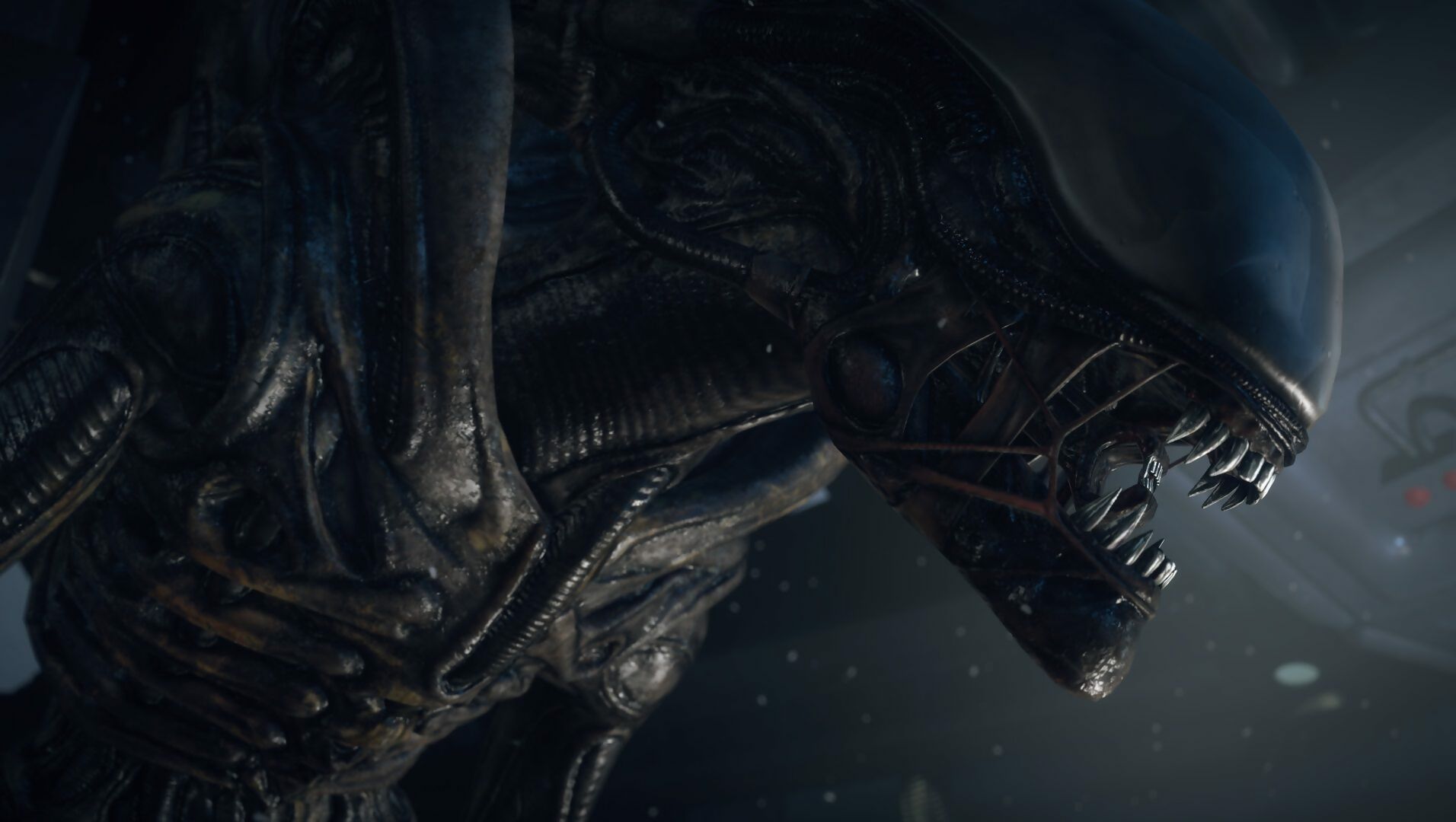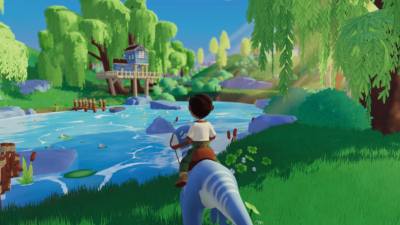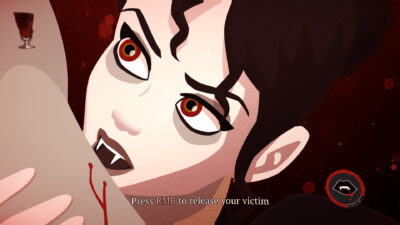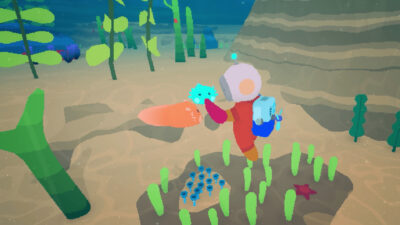
The designers behind Alien: Isolation, Aliens: Dark Descent and Aliens Infestation describe the challenges and possibilities of bringing Giger’s xenomorph to video games.
Since the early 1980s, some 50 plus games have spawned from the Alien franchise. Sure, as far as prolific movie licenses go, that’s way behind Star Wars, but Alien isn’t an epic space opera spanning a galaxy, it’s a series of stories focused on a single, monstrous species. And while the Alien cinematic universe has kept trundling on, it’s not as though anyone’s making games about Alien: Covenant. No, the vast majority of these titles, even the newest, still burst from the chests of 1979’s Alien and 1986’s Aliens, or the long-established crossover potential of Alien vs Predator.
One reason the first two films are so inspirational, of course, is simply that they’re ageless sci-fi classics. Romain Clavier, director of the forthcoming strategy game Aliens: Dark Descent for Tindalos Interactive, describes them as “a perfect cinematographic organism.” As a long-time uberfan of the series, he believes everything from the creature design to the characters, lighting, dialogue and scores is immaculate. Any developer who takes on an Alien license thus has piles of fantastic material to draw on.
For Adam Tierney, the director of 2011’s Aliens Infestation (arguably the pick of 2D alien games), there’s also something about the movies that translates perfectly to games, not least the way they balance creepy suspense and frantic action. “You’re looking for an ebb and flow in games,” he says. “You’re looking for fast-paced sequences and slow ones, and ones where the player feels settled. It just ticks all those boxes perfectly.”
That doesn’t mean Alien games have always made the most of the opportunity, however. A flick through the back catalogue shows that the monster has stalked a range of genres, from the left-field strategy game that reimagined the original film for home computers, to more familiar 2D platform shooters and FPSs. But as much as this range shows that the creature is adaptable to different environments, it also reveals some rather uneven quality. Doing the alien justice in digital form is no mean feat.

Alien: Isolation was a rare instance of a game capturing the title creature’s shadowy menace. Credit: Sega/The Creative Assembly.
Making a monster
Thanks to H R Giger’s obscenely iconic creature design, you might think it’s easy to make the xenomorph appear scary. But at times even that’s not as straightforward as it might seem. As a top-down RTS, for example, Dark Descent is grappling with the issue of over-exposing the creature and viewing it from a distance. “One of the greatest challenges was how to make them stay mystical and elegant while they are fully revealed,” animation director Richard Masa explains. “The best solution we found was to use ‘superhero’ exaggerated poses and speed them up to an insect-like motion. We also added a ghosting effect for sudden movements.”
Similar issues arose in Creative Assembly’s Alien: Isolation, released in 2014, which more than any other game has captured the ambience of Ridley Scott’s original film. The initial aim was to recreate the xenomorph from as it appeared in Alien, the game’s creative lead Alistair Hope explains, but as in the movie itself, once it was out in the open it looked like a man in a suit. “That really diminished the alienness,” Hope says. “So we created a hybrid version, which has the lower half and that reverse knee of the Aliens creature, and gives it that strange unknowable feel.”
In Infestation, meanwhile, it wasn’t so much a matter of realism as variety that was a potential hitch, given Tierney and his team at Wayforward were tasked with making a Metroidvania for the Nintendo DS. “I think if you’re only fighting xenomorphs the entire time [in this type of game], that would get a little bit old,” he says. They thus created two forms of the adult creature – one fast moving and another slower but sneakier kind. It also called on the gruesome services of facehuggers and ‘hatchlings’, and pulled in some heavy weights for boss fights, including a queen alien and even a massive king. Getting those to look right required some effort, Tierney says. “They had 50 to 100 individual pieces – every little vertebrae on their tail and every piece of their head – and we would animate them programmatically. It creates a very fluid, realistic motion.”

Aliens Infestation for the Nintendo DS is arguably the best 2D game based on the IP made so far. Credit: WayForward.
How to train your alien
If the look of your xenomorph is the first hurdle, getting it to behave correctly is a much larger obstacle. In Isolation that took “years of work,” Hope says. “We talked about trying to ‘re-alien’ the alien. It wasn’t just going to be an angry dog that chases you around.” The desired effect involved stacked AI systems that managed both the actions of each entity and the higher-level pacing of the game, either directing the alien towards the player, or sending it ‘backstage’ to provide respite. “I remember thinking filmmakers have it’s so easy because they get to define every shot, and they can control everything,” Hope adds.
One indelible characteristic of xenomorphs, of course, is they have a habit of popping up where you least expect or ‘coming outta the goddamn walls’, and a lot of effort goes into making their digital versions fully mobile. “I want the player to feel that the creature is vicious,” Clavier says of Dark Descent. “Harassing you so you feel like it has been programmed to exterminate you.” And yes, they will clamber over vertical surfaces, although there are limits here thanks to the nature of the game’s perspective. “It makes no sense in a top-down tactical game to have the creature walking on ceilings you don’t see.”
It’s not only modern Alien games that have tried to recreate the xenomorph’s full box of tricks either. Back in the late 1990s, Chris Miller understood that this was no ordinary game monster when he directed Alien vs Predator for Rebellion Entertainment. “Everybody had played Doom and Duke Nukem 3D,” he says, “where it was a matter of learning the patterns.” An Alien game, conversely, needed more suspense and surprises, but also had to be distinctive and convincing because players could take control of the xenomorph itself. For Miller, previous efforts to put an alien in our hands, such as the Atari Jaguar version of AvP, hadn’t really got to grips with the creature. “You never went upside down,” he says. “You were an alien on the floor, and our issue was aliens would almost never be on the floor.”
Creating a monster that could jump out of vents and sprint along ceilings under the player’s direction turned out to be a tricky endeavour. Simply enabling the player to run over every surface was a technical headache, due to the way the first-person camera followed the slightest variations in the environment’s geometry. “In initial tests where you’d have the alien attached, the camera would slam vertically, and then right back down, and then vertical again, and then right back down,” Miller says. To solve the problem, the team took advantage of the game’s modular level design, spinning chunks of the scenery around the player, rather than the camera.
Once the controls felt right, the challenge was to get players to think like the creature. Rooms were linked by a maze of vents the alien could crawl through, and there was plenty of vertical space to help players sneak up on their prey or drop on them from above. Some concessions to ‘alien-ness’ had to be made with the single-player campaign, though, in terms of mission objectives, which felt all-too human in cases where you were sabotaging machinery, for instance. “Xenomorphs are mostly just kind of bugs,” Miller admits. “But the way we played it was that these guys were a little bit more thinking. Because you’re playing and you would strategise more.”

Getting the xenomorph’s behaviours right in Alien: Isolation took “years of work according to Alistair Hope. Credit: Sega/The Creative Assembly.
Read more: From Isolation to Observation | The No Code story
Fair play
Indeed, in game terms, it’s not always possible or desirable to make aliens ‘realistic’, not least because their ruthless efficiency isn’t exactly conducive to a fair challenge. In Alien: Isolation, the decision was made to accept that reality, with any close encounter leading to a swift game over. “Games are usually a little bit more about a power fantasy,” Hope says. “We had to recognise that, okay, this is different, and we need to give you the tools to be able to try and prevent that moment.” Even then, there’s always the chance of a sudden unexpected death, but that’s part of the magic, Hope believes. “The flip side of that is the payoff. That moment when you get to the safe station and feel that genuine sense of relief.”
In Alien vs Predator there was the additional job of balancing the inter-factional multi-player mode. The alien was powerful but vulnerable, exploding all to quickly when exposed to gunfire, so getting its movement speed just right was key. “They needed to be fast enough that they could jump and get away,” Miller says. “But also if you’re running at [an opponent], and you change your path, you’re sure that you close the distance fast enough that they can’t reload.” A great deal of fine-tuning was required, he adds, right down to the way the xenomorph’s acid blood would splatter when they got shot.
Infestation also required intensive trials to give its marines a chance. “We had about a half a dozen actions the xenomorph could do,” Tierney says. “In early testing we would have them colour-coded, so we could see how often they do each one, and if it’s fair or too aggressive.” The marines themselves were given extra dynamism, snapping to cover and performing tactical reloads, but with the tough caveat that death was permanent, forcing you to take control of another marine from a finite supply. “The feedback we were getting was, ‘Well, yeah, but can’t you reset later?’” Tierney recalls, “But we really stood our ground and said, ‘No, that’s the whole point.’” That’s why each marine had their own dialogue and portrait, he adds, “so that when you die in the game, it’s really heart breaking.”
As for Dark Descent, which expects you to think yourself out of situations on the fly, Clavier believes the studio has “finally found the sweet spot between a true sense of danger and fairness.” As with Infestation, the focus here is on the marine experience. In particular, Clavier wants to recreate the feel of the first major confrontation with the xenomorphs in Aliens, in which lieutenant Gorman fails to get his squad out in time. “I kept asking myself what would I have done if I were Gorman in this situation,” Clavier says.
To that end, Dark Descent isn’t only about surviving moments of bloody mayhem. “We developed a stress system that represents the growing mind-pressure on your marines,” Clavier explains. Making shelters so they can rest, dishing out stress pills and even yelling them back into focus will be among your duties. “If you don’t, things will get messy pretty fast.” And if that sounds impossibly stressful, one consolation, Masa reassures us, is that, “besides the real-time gameplay, there is a slow-motion option that the players will constantly use during combat.”

Aliens: Dark Descent finds “the sweet spot between a true sense of danger and fairness” according to director Roman Clavier. Credit: Tindalos Interactive.
The fright stuff
Then again, stress is part of the experience we sign up for with Alien games, along with outright panic, and the best titles provide exactly that, even if it doesn’t come easy. For instance, when it came to facing the aliens in Alien vs Predator, in early tests, Miller says, “people were just blazing through the game.” The way to get players to slow down, it transpired, was to throw more facehuggers into the mix, “because facehuggers instantly cause everybody to shit themselves.” The problem was that too many facehuggers affected the frame rate, so, well, Miller cheated. “I said, ‘Fine, don’t put them there. Just play the sound,’” he says. “So in many places where you hear the sound, they’re not there.”
In Isolation too, the tension isn’t always down to the monster itself. In prototypes that placed the xenomorph in grey box environments, Hope says, while it behaved as expected, “it felt really flat, really disappointing.” It wasn’t until they added lighting, visual effects and sound that the concept worked, and in the end those supplementary elements often created the most tension. “We get to the point where the player is fearful when the alien is onscreen,” Hope says. “But we realised that players were more fearful when they couldn’t see the alien. The fear of the unknown is real.”
Equally important was the change to first-person from third-person perspective during development. While the game’s proof-of-concept build had been made in first-person, Hope explains, they had to switch to third-person because that’s what was expected of survival horror games at the time. This third-person version “was good,” he continues, but “then at some point, we hacked the camera into [protagonist] Amanda’s head, and it was just night and day.” The way the xenomorph dominated the frame, it suddenly felt as though “the alien is not hunting the avatar, it’s hunting you.”

In Alien Vs Predator, the xenomorph is vulnerable to gunfire, but fast and deadly in sufficient numbers. Credit: Rebellion Developments.
Infestation had no such perspective switches to play with, and naturally the alien is less imposing in a side-on 2D game, but Tierney still wanted some of the films’ atmosphere. Recreating the motion sensor device from Aliens in the game, for example, allowed aliens to stay hidden while giving the player some indication that there was something in the room. “It really heightens that anxiety and caution and makes people slowly crawl through those areas,” Tierney says. Sound design was also important, he adds, plus another trick was to have characters move relatively slowly, with the ability to run limited by a stamina gauge, forcing a more circumspect approach.
Ultimately, however, while all of these tricks and audio-visual techniques are part of the package, these developers agree that the creature itself remains the star of the show. “I think a lot of it goes back to the Giger style of art,” Tierney says. “It feels very nightmarish, how abstract it is, and how you don’t understand what you’re seeing.” Hope also highlights the psychological impact of the design. “It actually exists in your mind as an idea as something formidable. I guess it’s also a thrilling idea to test yourself against this thing that is so memorable and extraordinary,” he says.
Indeed, the xenomorph is so bizarrely hideous, very little else comes close to being so disturbing. “It’s like every possible vile thing,” Miller says. “It violates every part of people’s inner fears. It chokes you out, it smothers you, impregnates your person with a probiscis. I mean, it’s fucking terrifying.” Yet the real secret, perhaps, is that somehow it’s also a thing of beauty that keeps drawing us back for more. “The creature finds the sweetest spot to trigger both a natural rejection and an irrepressible attraction,” Clavier says. “You fear and are disgusted by the nature of the xenomorph, but you can’t take your eyes away from it.”
Read More: First contact | designing video game aliens





